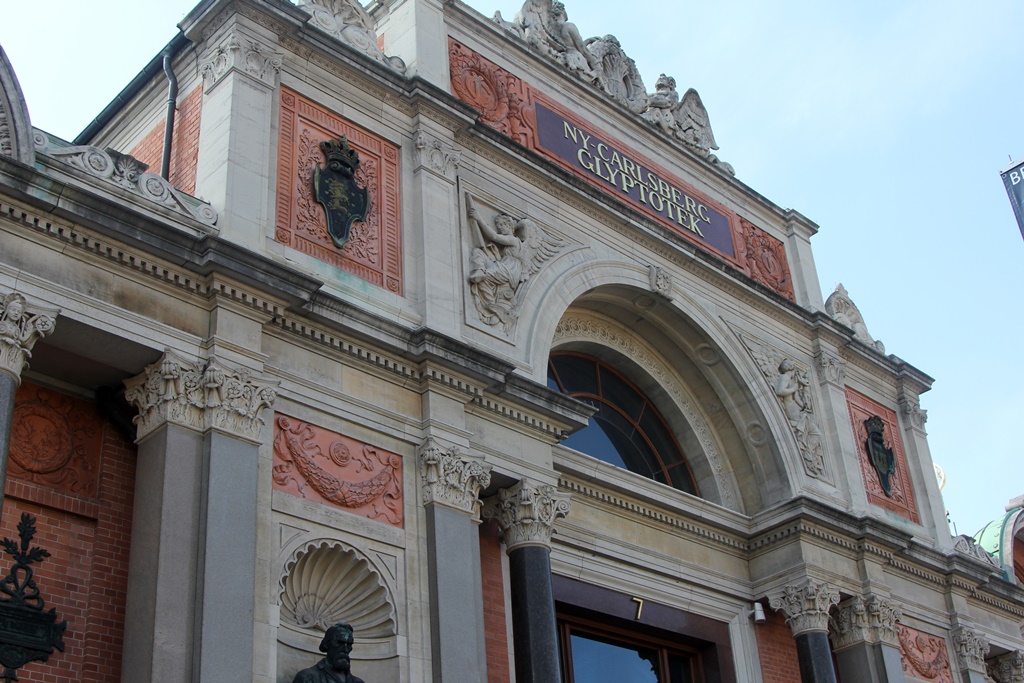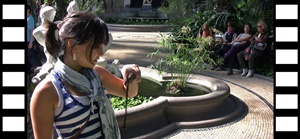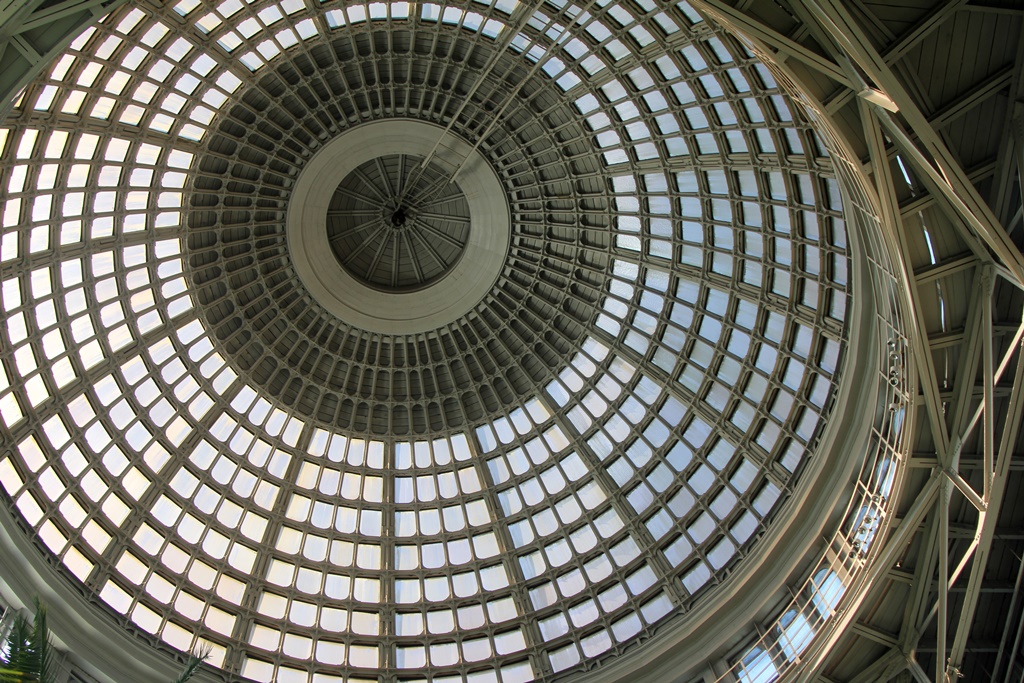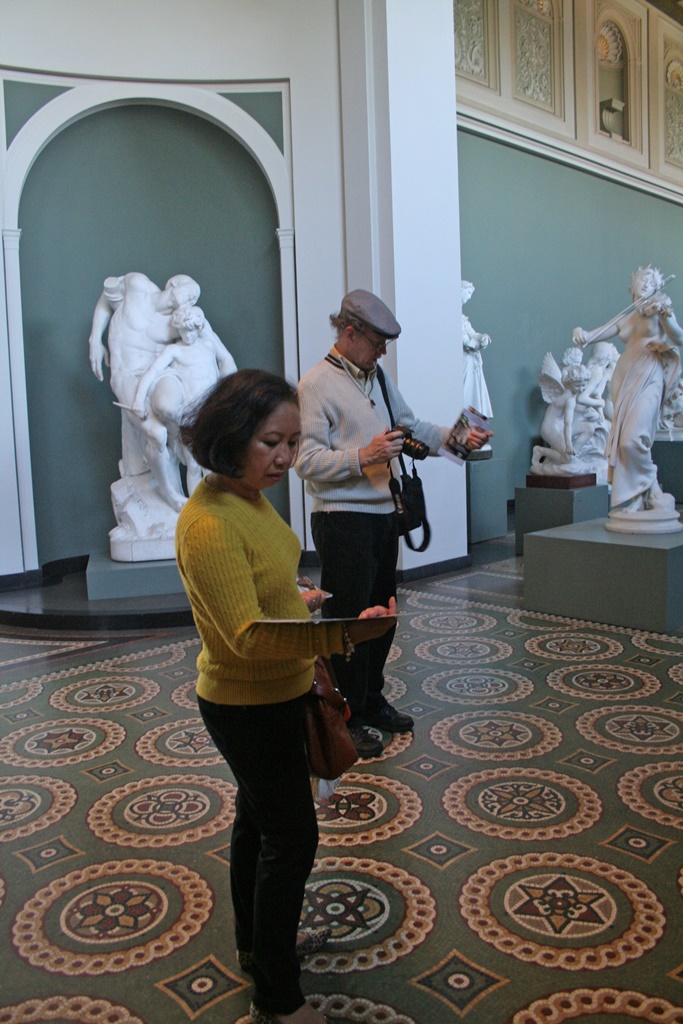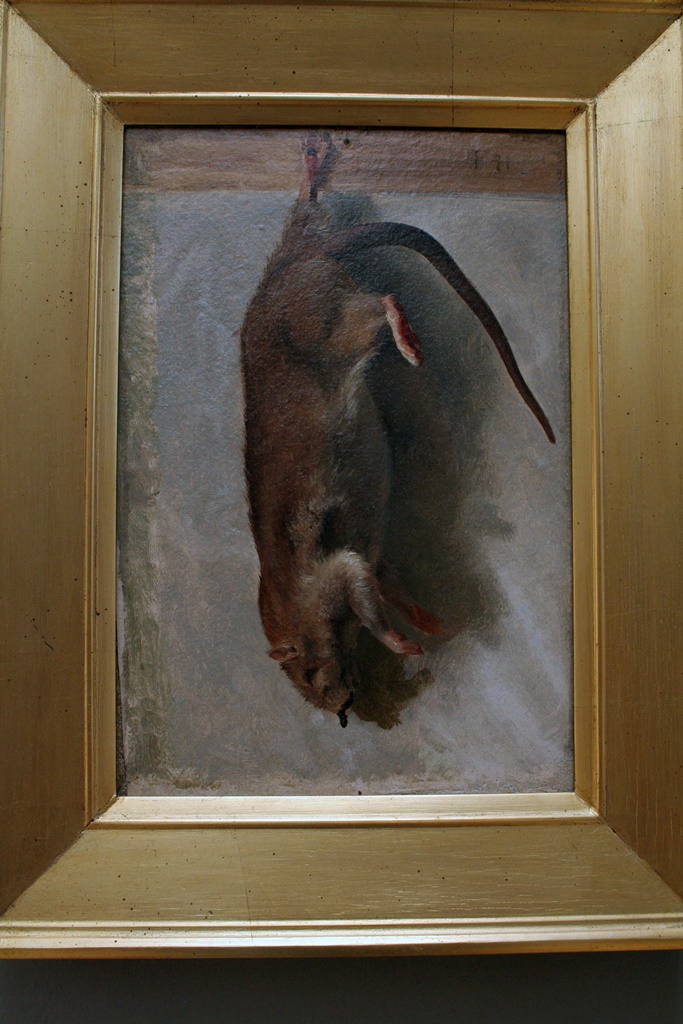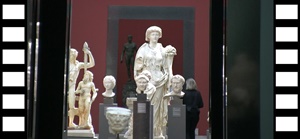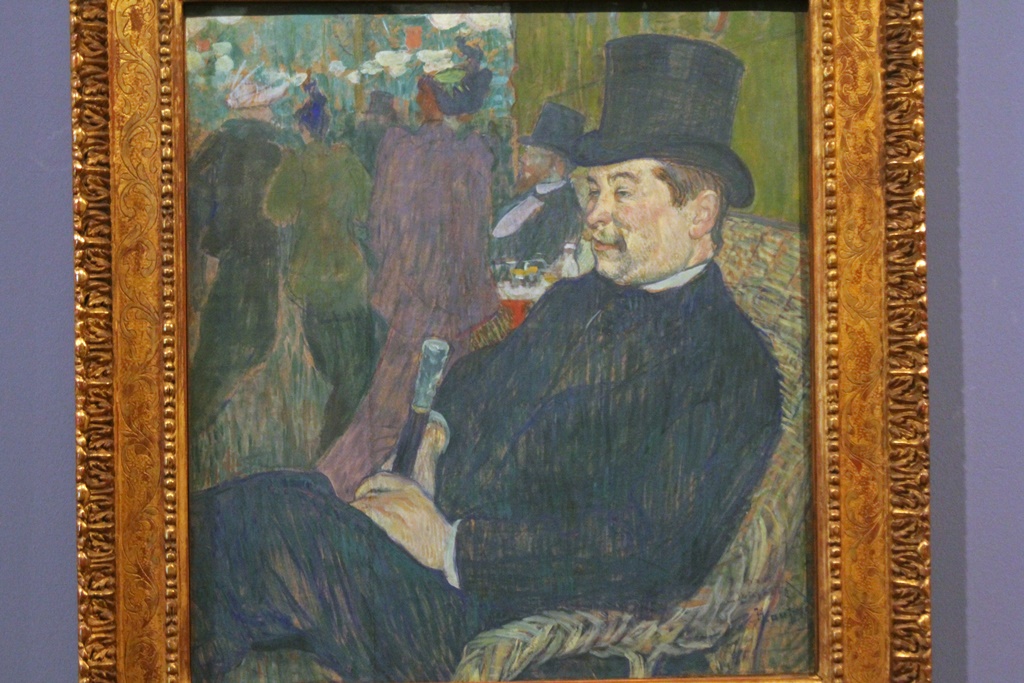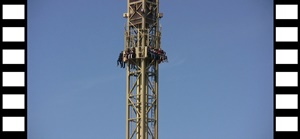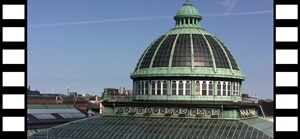Glyptotek Entrance
The first point of interest we visited in Copenhagen was the
Ny Carlsberg Glyptotek. A "glyptotek" is a place for storing
and exhibiting sculpture, and the museum does in fact have an emphasis on sculpture, but there are other things to see
too.
If the name Carlsberg seems familiar to you in connection with things Danish, it might be because of a previous acquaintance
with Carlsberg beer. As it turns out, there’s a very real
connection between the beer and the museum, as the museum was founded in 1897 by the son of the founder of the brewery,
and was built to house and display his personal collection of artworks. You’re no doubt thinking that this would be the
younger Mr. Carlsberg, but this is not quite the case. The Carlsberg brewery was founded in 1844 by Jacob Christian Jacobsen
(commonly known as J.C. Jacobsen), who made up the name Carlsberg to honor his son Carl, who was a young child at the time.
The word "Ny" in the museum’s name is a Danish word pronounced "new" which means... well, new. This might have you thinking
the museum was preceded by an "old" (or ældre) glyptotek, but again this is not quite the case. As Carl grew up
working for his father J.C., he learned a great deal about the brewing business – his Dad was an early "scientific" brewer
who approached the business with academic rigor, to ensure high quality. As Carl became an adult, his father invited him
to begin his own brewery in 1881. Carl accepted the offer and called his brewery Ny Carlsberg. Carl introduced some
shortcuts in the brewing process which improved efficiency but earned the disapproval of his father, and something of a feud
resulted. But there was a reconciliation between the Jacobsens a year before J.C.’s death in 1887, and eventually the two
breweries were re-merged, in 1906. The point of all this is that the "Ny" in "Ny Carlsberg Glyptotek" is just part of the
name of the company that founded it, and does not refer to the museum itself.
Before visiting the museum, we went looking for
Copenhagen Cards for ourselves. A holder of
a Copenhagen Card is entitled to admission to several of the city’s top attractions, and to unlimited use of the city’s
public transportation system (mainly buses in central Copenhagen). Prior to leaving for Europe, we’d looked up admission
fees and transit fees on the Internet, did the math and decided the Copenhagen Card would be a good deal for us. We found
Copenhagen Cards for sale at a tourist information office at the corner of Vesterbrogade and Bernstorffsgade, though they
are also supposed to be available at the airport and the train station.
We made our way over to the museum entrance, just past Tivoli Gardens on Hans Christian Andersen’s Boulevard, and flashed
our Copenhagen Cards. We immediately found ourselves in a large atrium with a glass dome, called the Winter Garden.
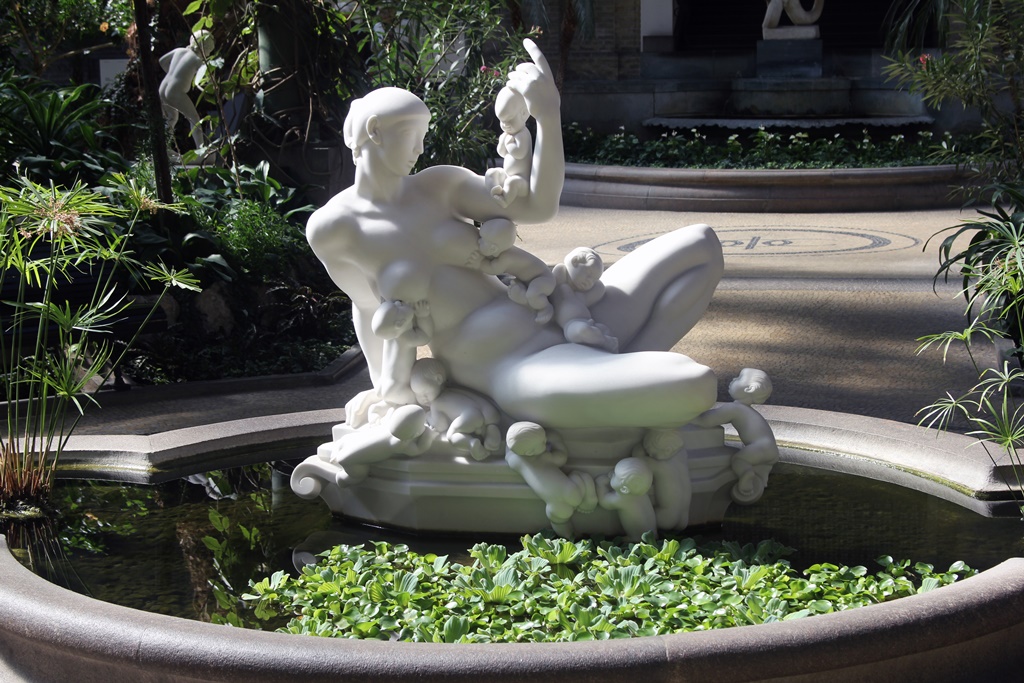
The Water Mother, Kai Nielsen (1919-20)

Connie with Water Mother and Winter Garden
Winter Garden Dome
The Ny Carlsberg Glyptotek is made up of two principal buildings. The older of the two surrounds the Winter Garden on
three sides, and is the first building we explored. True to the name of the museum, we found it to hold a substantial
amount of sculpture. The museum actually has the largest collection of Rodin bronzes outside of France.
Nella and Bob and Statues

Electricity, Louis-Ernest Barrias (1889)
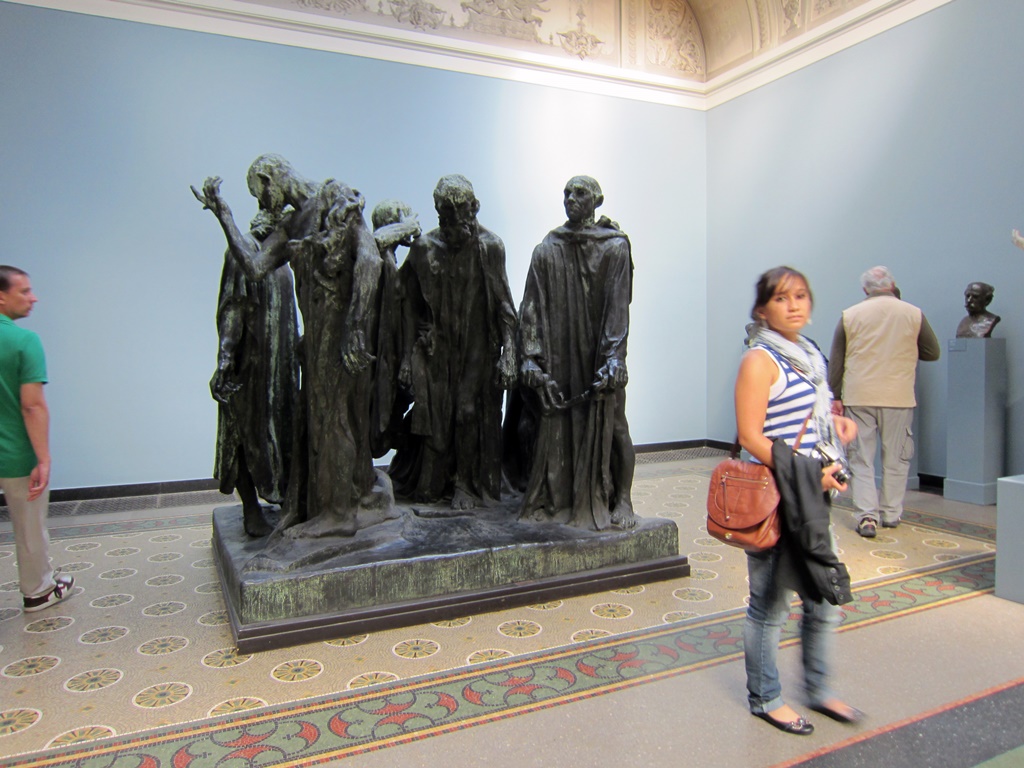
Connie and The Burghers of Calais, Auguste Rodin (1902-03)
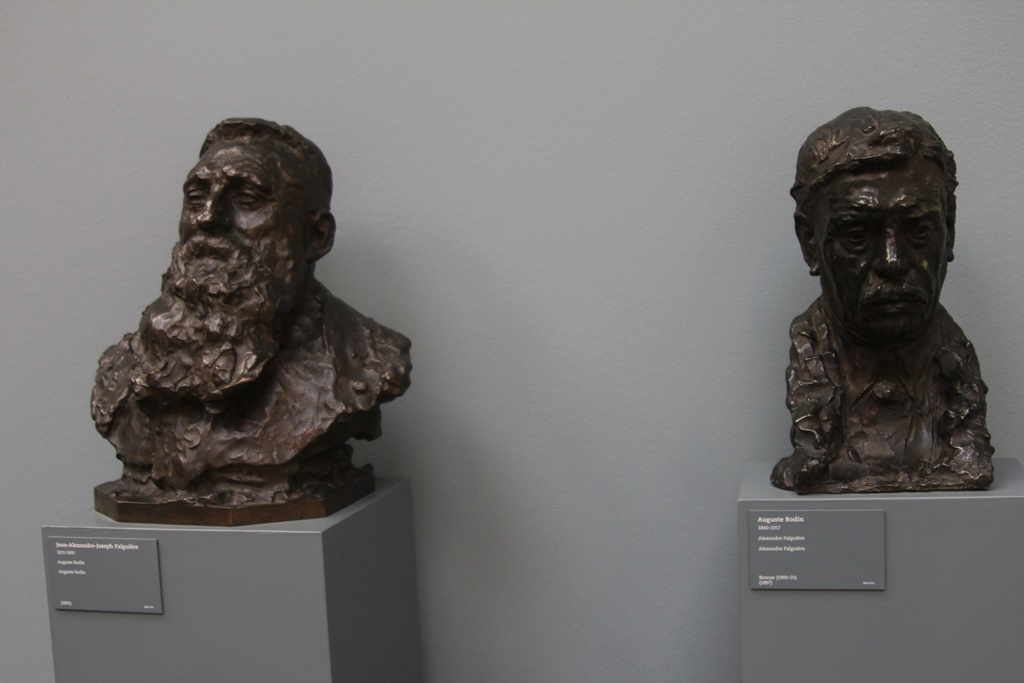
Rodin, Jean-Alexandre-Joseph Falguière (1891) and Falguière, Auguste Rodin (1897)
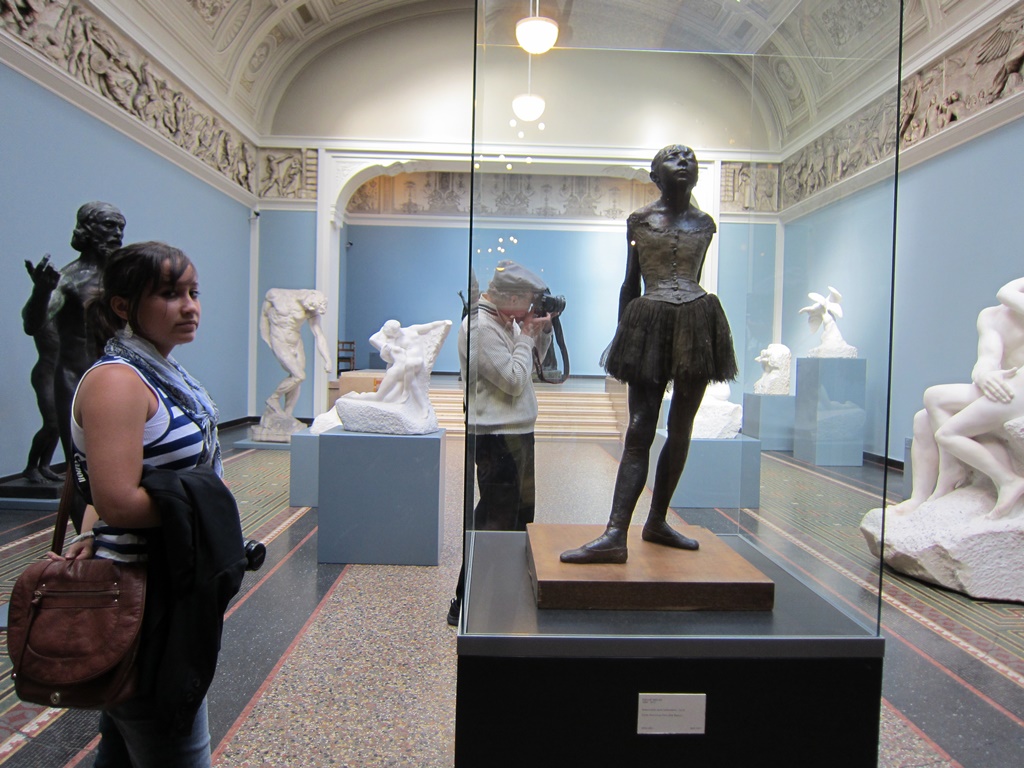
Little Fourteen-Year-Old Dancer, Edgar Degas (1879-81)
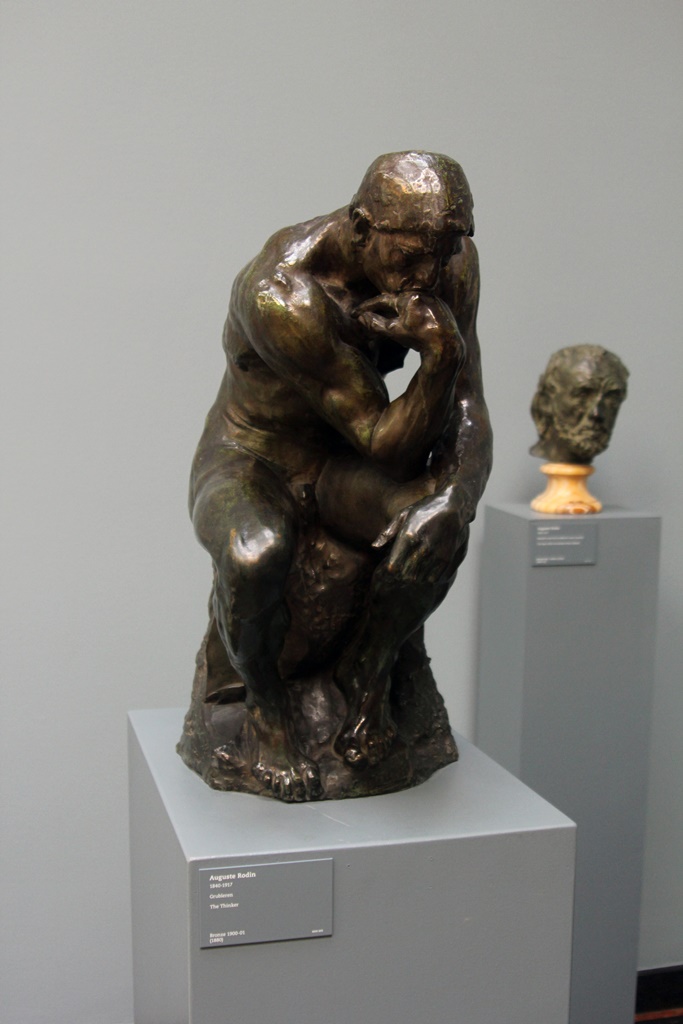
The Thinker, Auguste Rodin (1880)
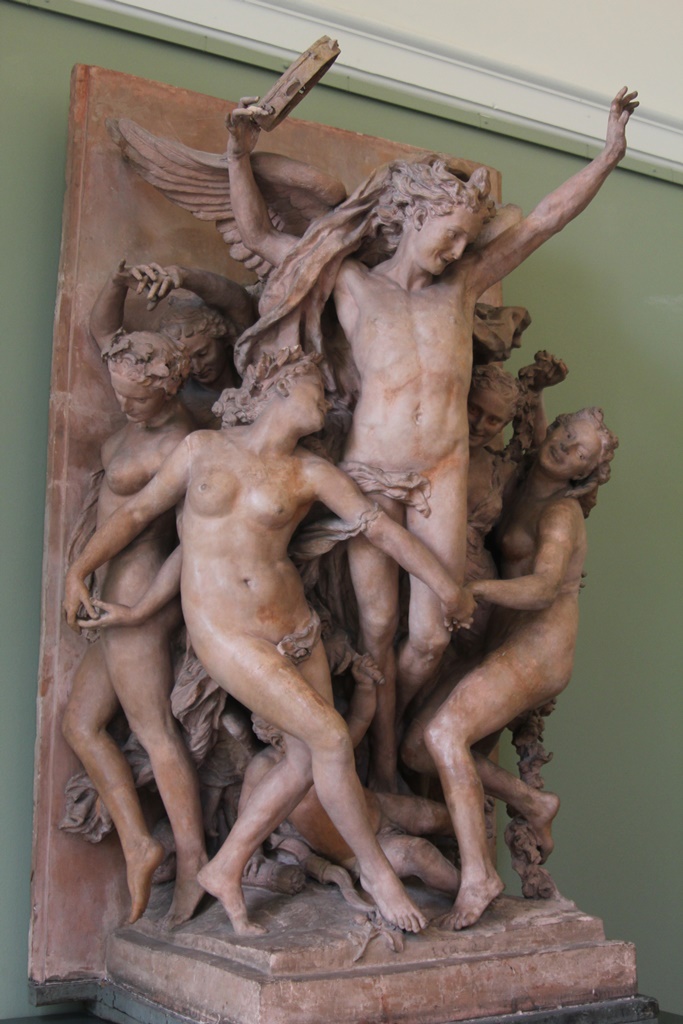
The Dance, Jean-Baptiste Carpeaux (1866-69)
Attention is also devoted in the Glyptotek to Danish art, both sculptures and paintings.
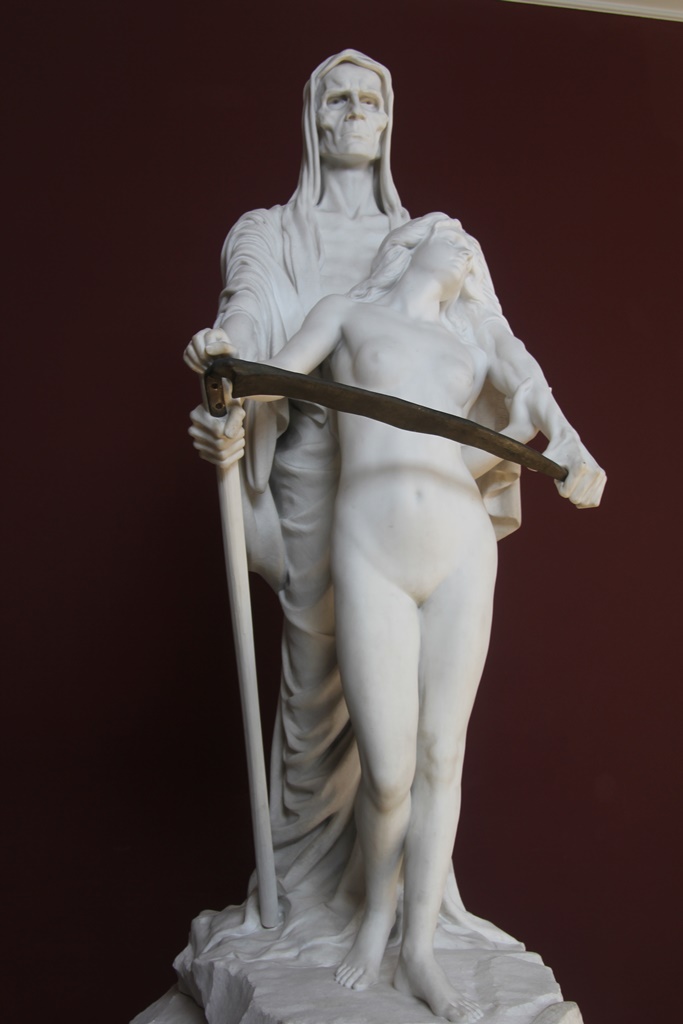
Death and the Maiden, Elna Borch (1912)
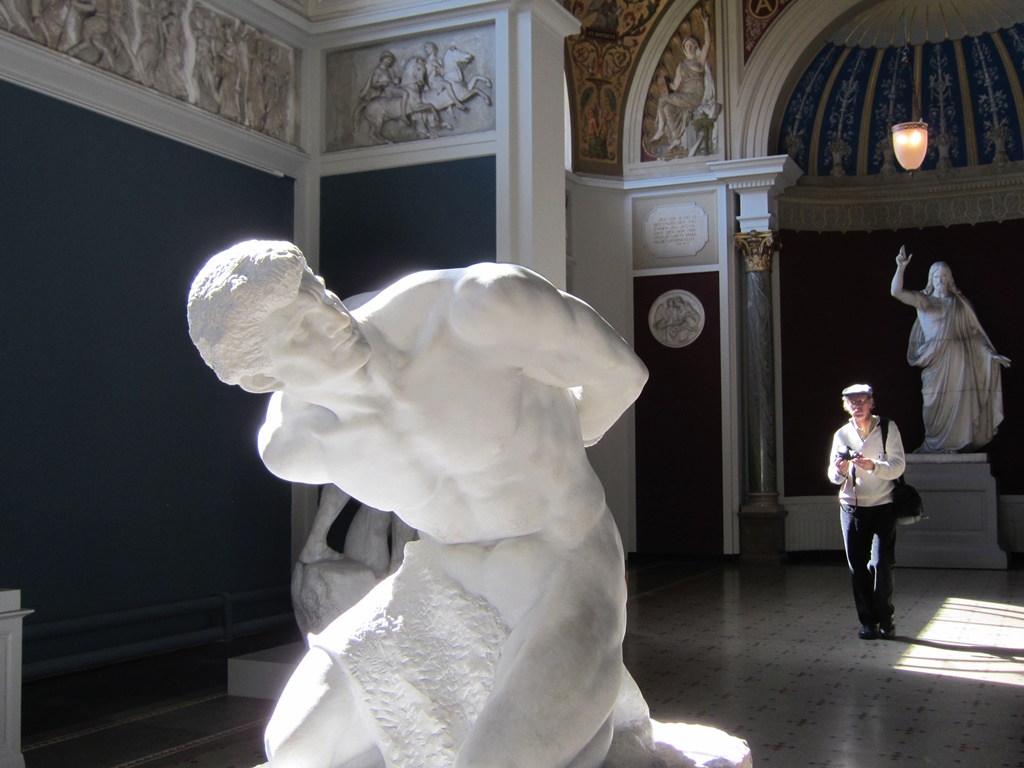
Bob and The Slave, Stephan Abel Sinding (1913)
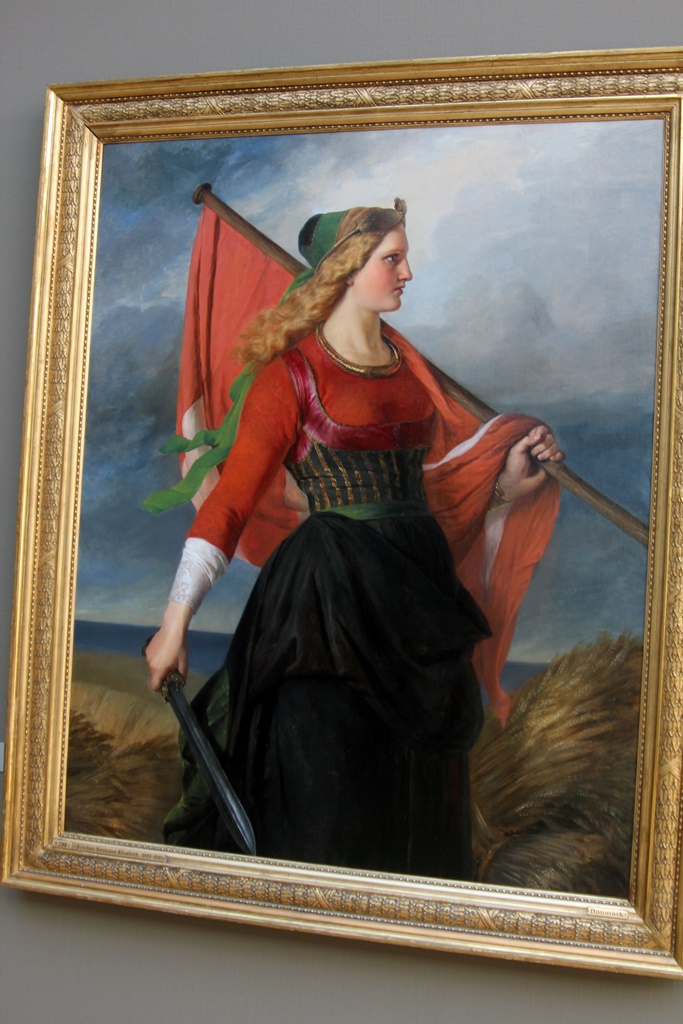
Mother Denmark, Elisabeth Jerichau-Baumann (1851)
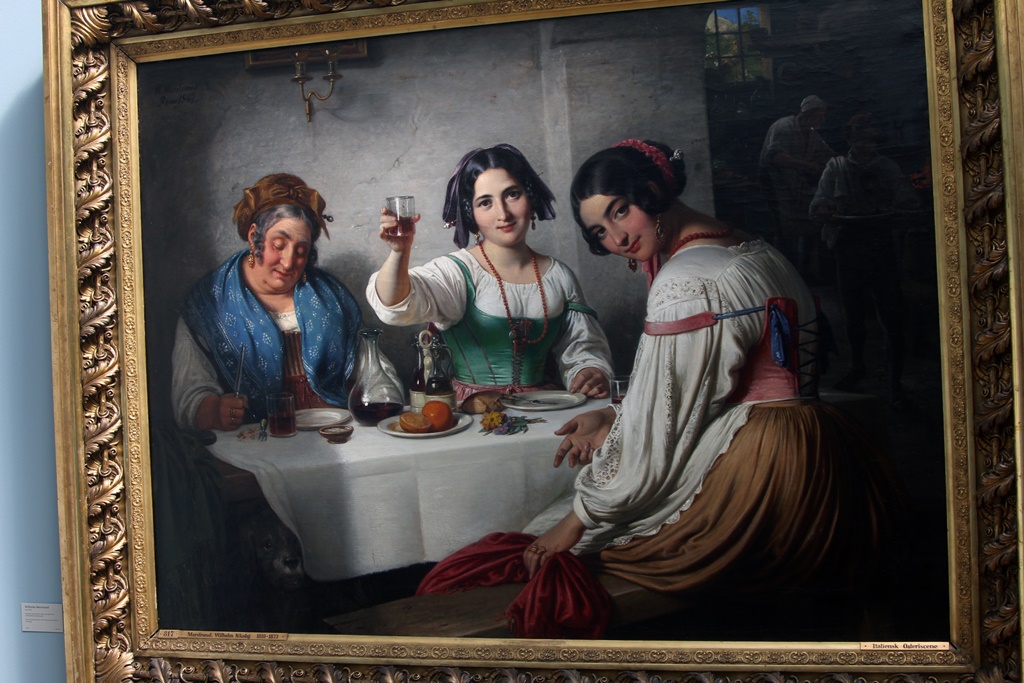
Italian Osteria Scene, Wilhelm Marstrand (1847)
Study of a Dead Rat, Lorenz Frølich (1841)
After perusing the Danish art, we proceeded to the second of the two buildings, whose entrance is found across the Winter
Garden from the museum entrance. Located centrally is a Central Hall, which is used mostly for performances of classical
music.
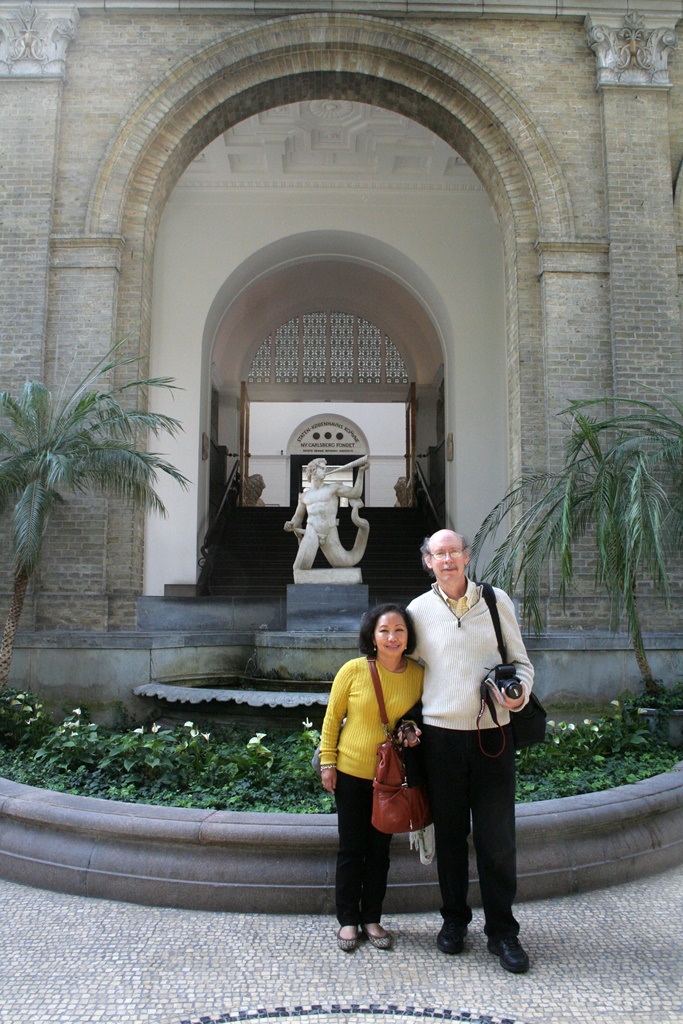
Nella and Bob in Winter Garden
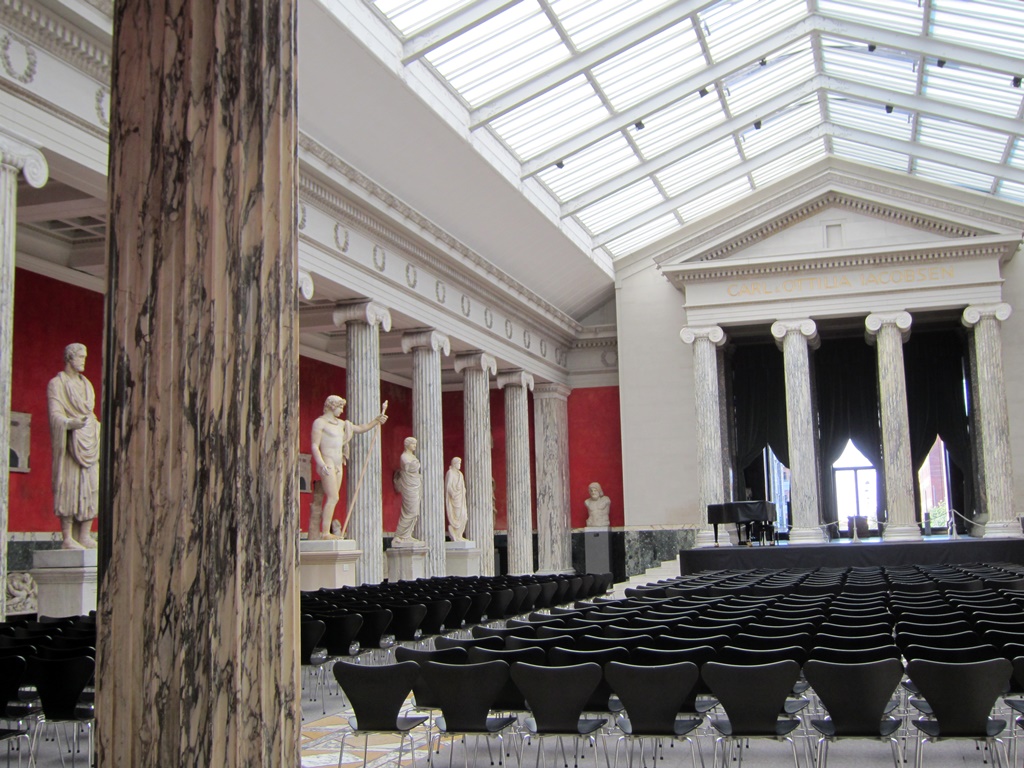
Central Hall
We found the second building to house a large collection of ancient statuary from the Mediterranean area. First we
encountered pieces from ancient Rome and Greece. Apparently Carl had an agent in Rome for awhile who would buy and
send him stuff as it became available.
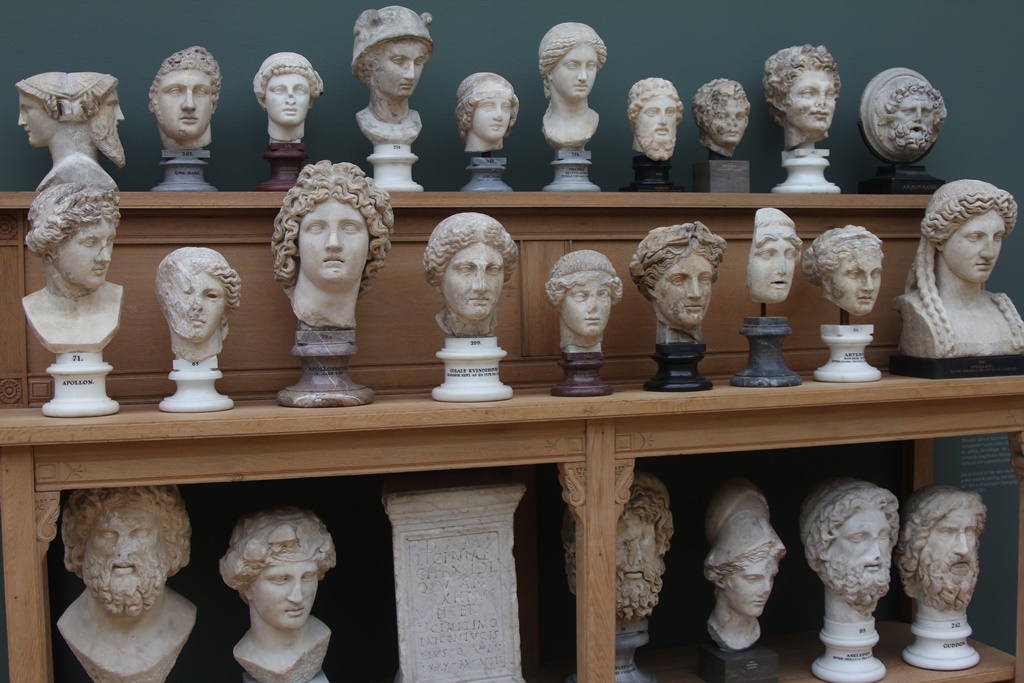
Roman Busts
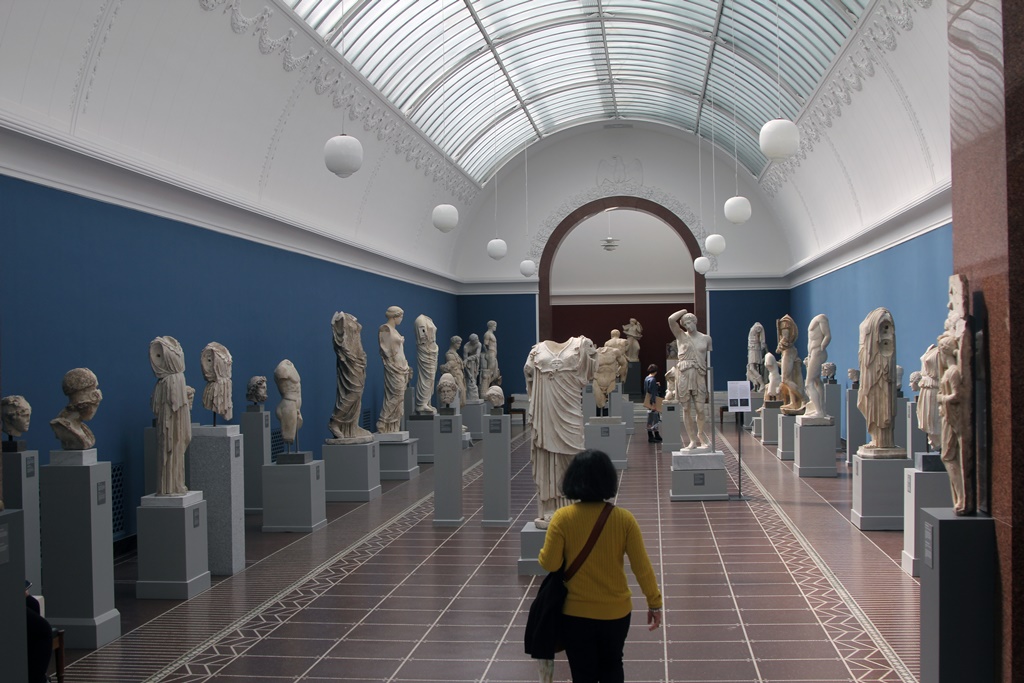
Nella and Hall of Roman Statuary
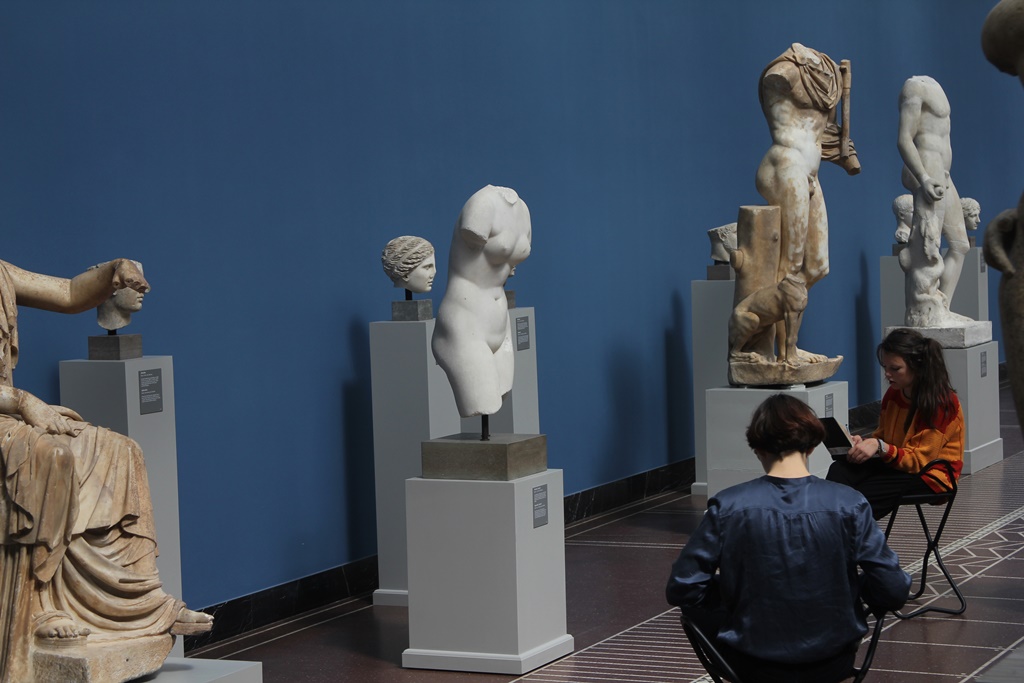
Art Students Drawing Aphrodite

Nella and Connie and Roman Statuary
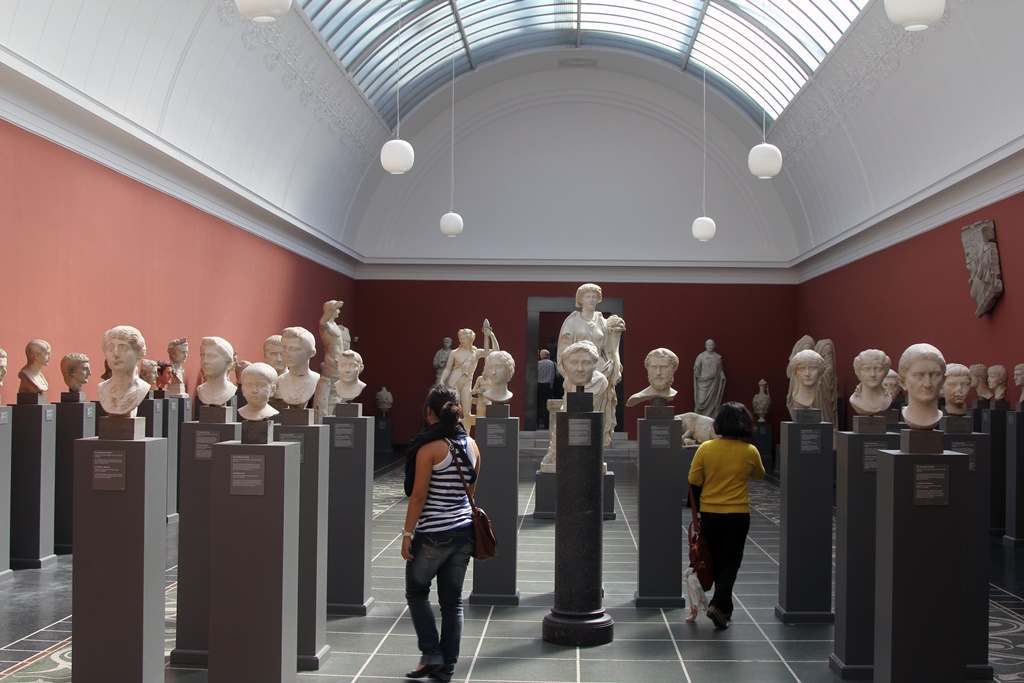
Connie and Nella Among Busts
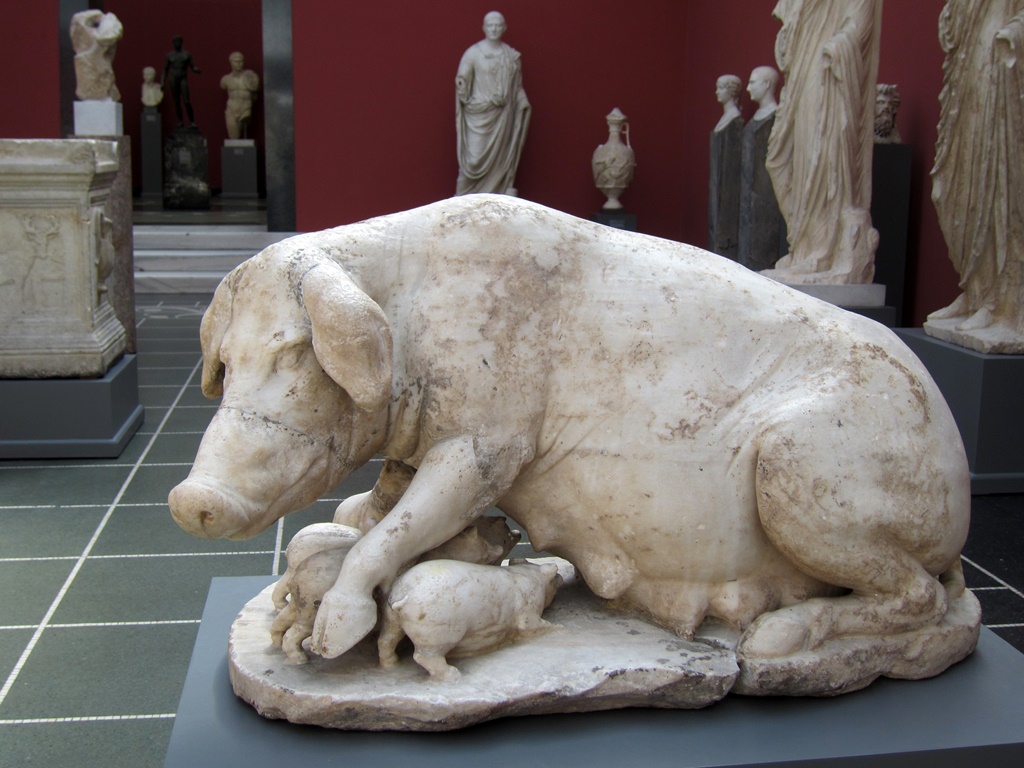
The Laurentian Sow (1st-2nd C. A.D.)
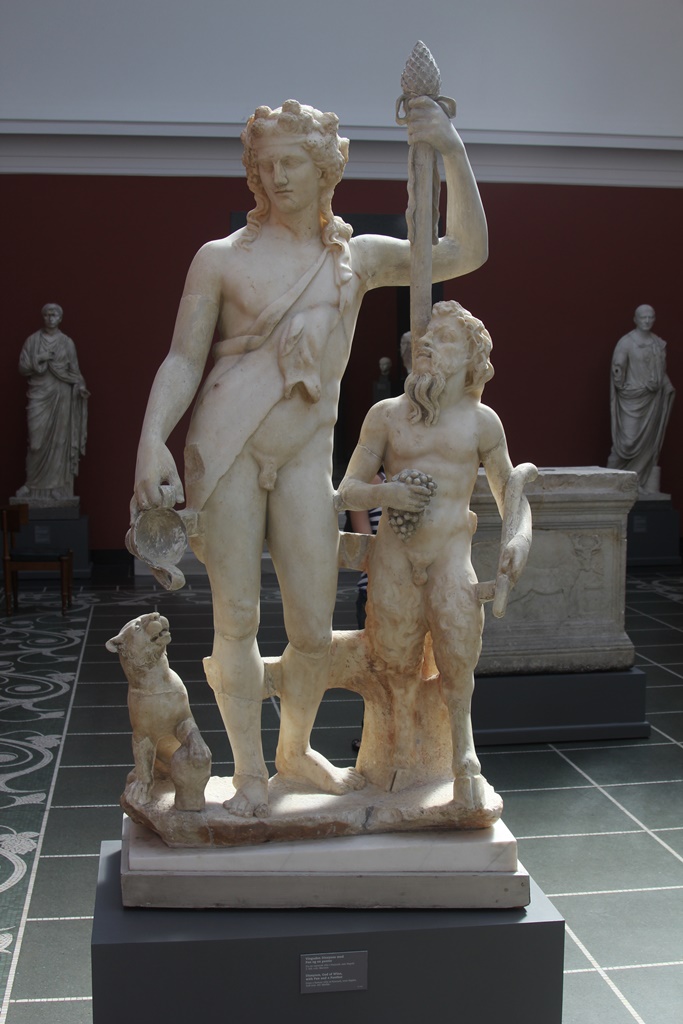
Dionysos with Pan and Panther (2nd C. A.D.)
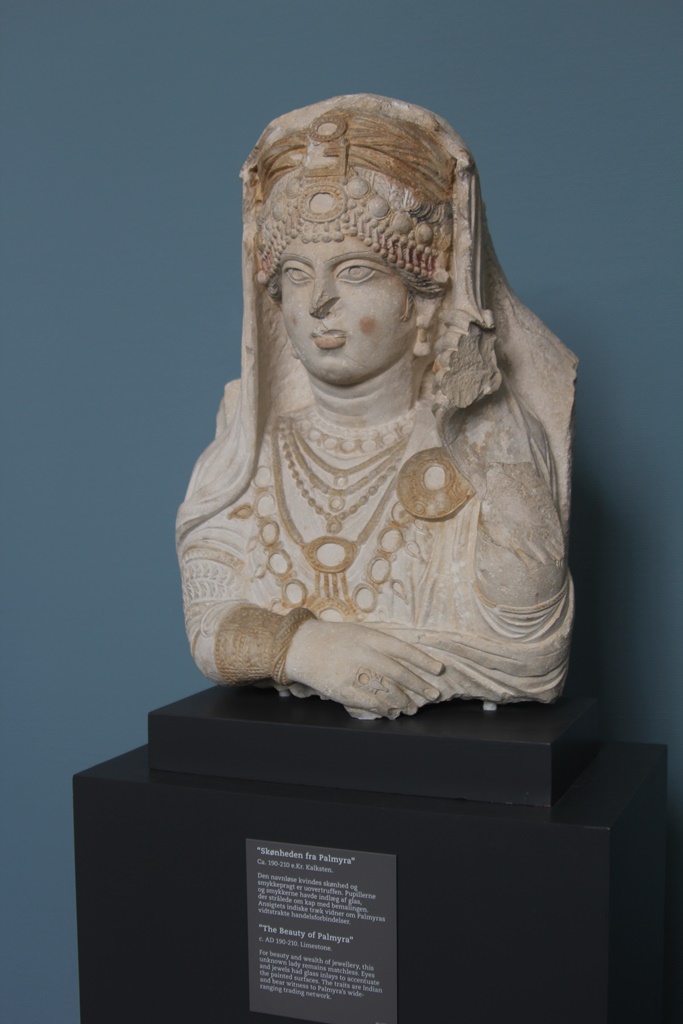
The Beauty of Palmyra, (190-210 A.D.)
There is also a collection of ancient Egyptian artifacts on display. Part of this collection is located in a dim,
tomblike room that is reached by descending a long, dark ramp.
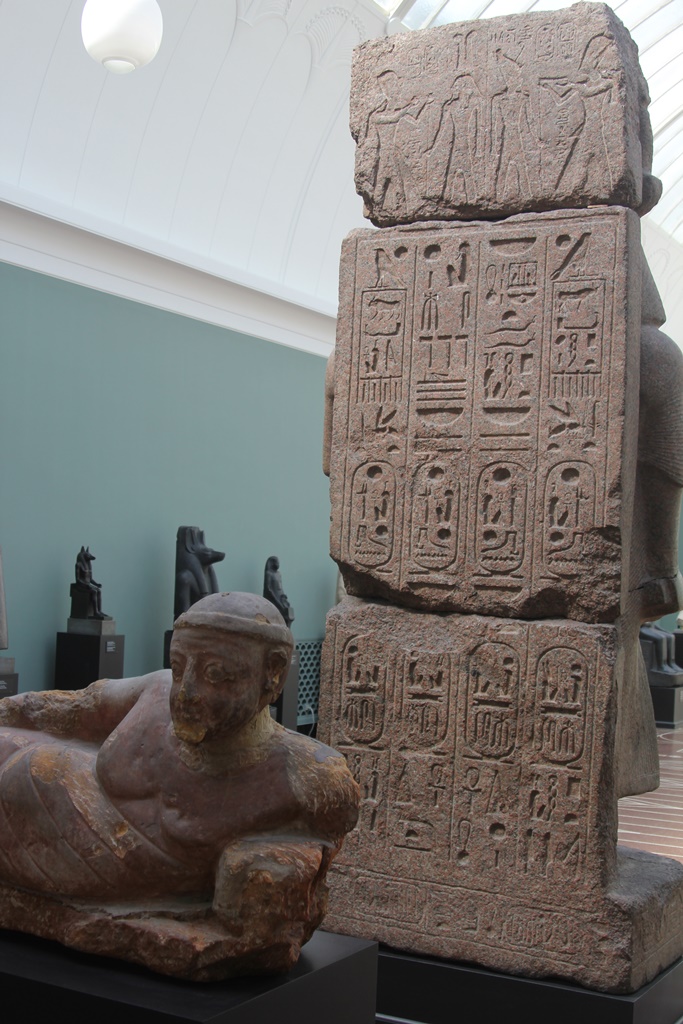
Stone Tablet
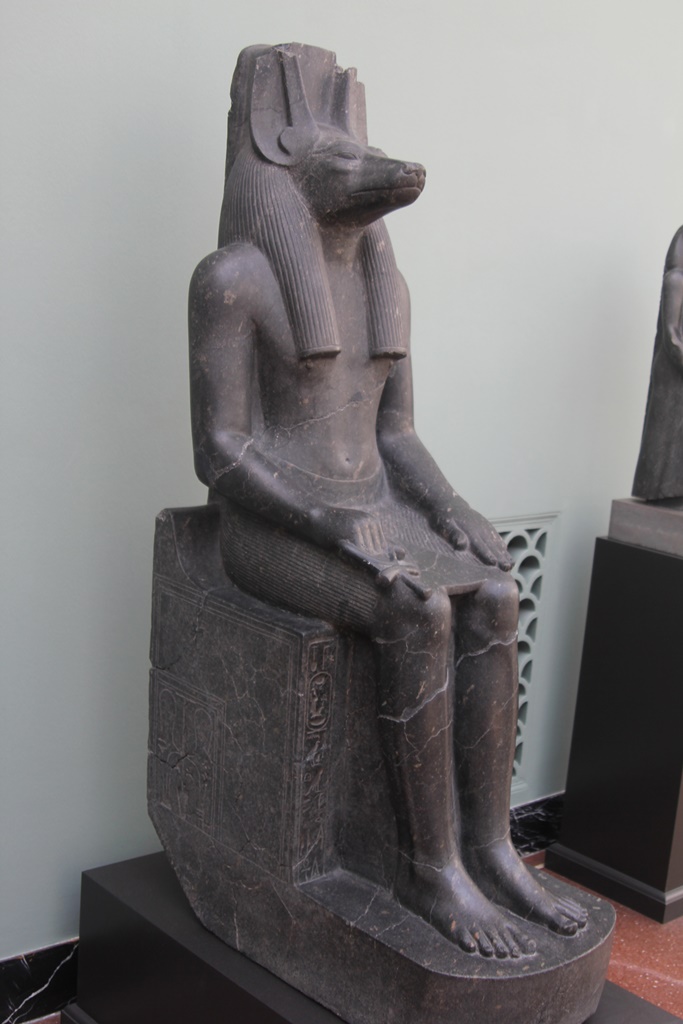
Enthroned Anubis (700-300 B.C.)
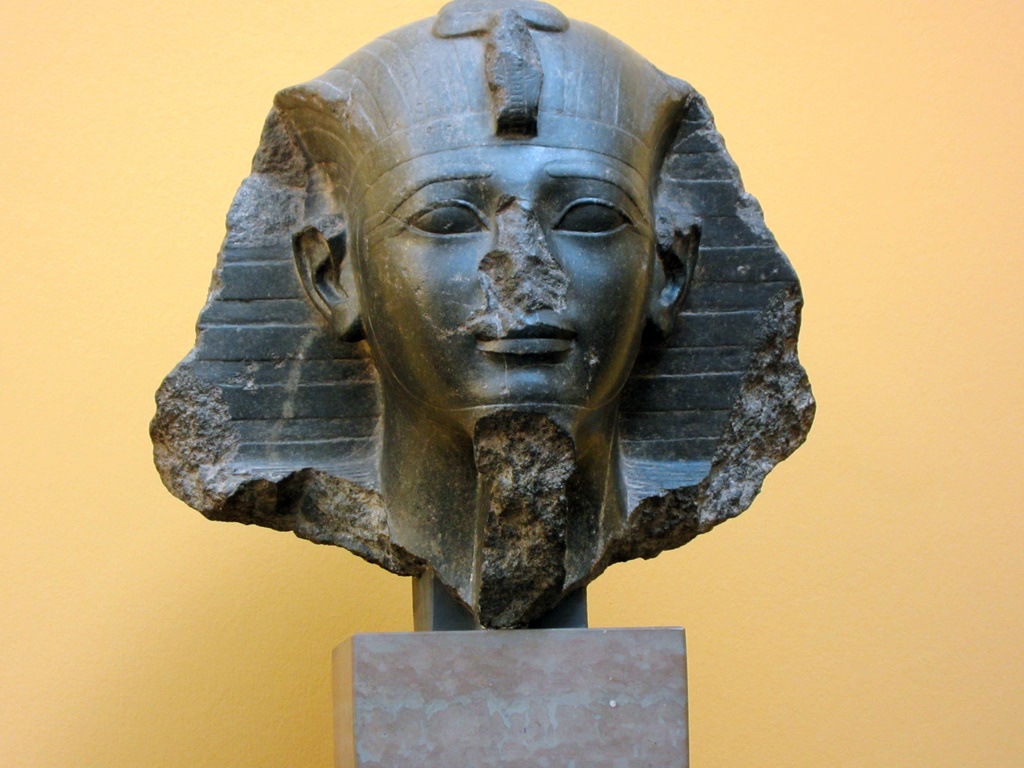
Amenophis II (ca. 1439-1413 B.C.)
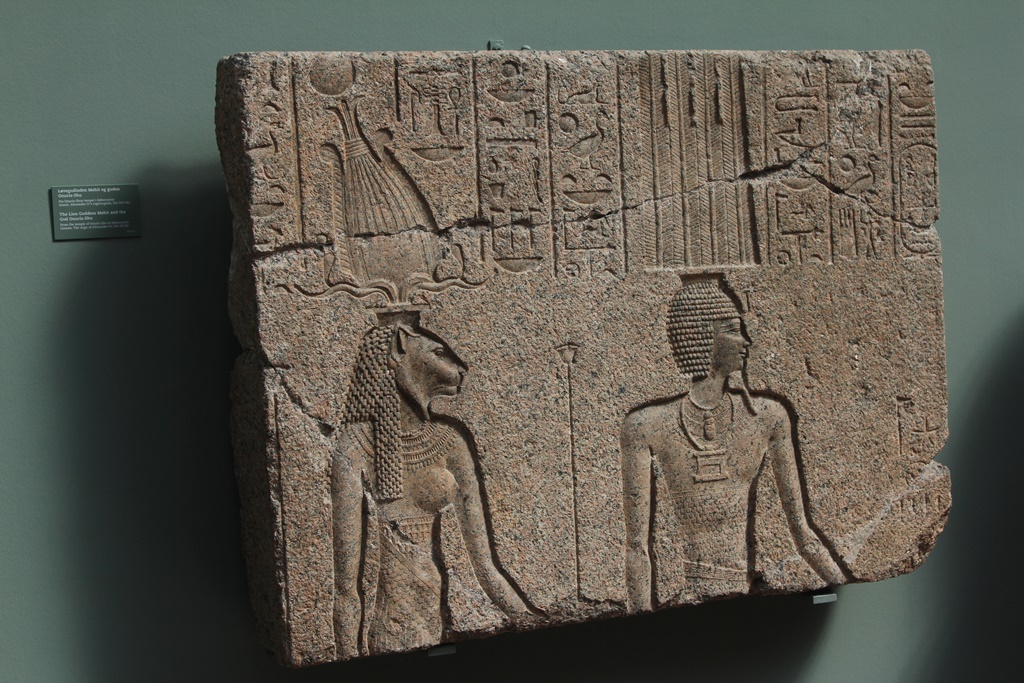
Goddess Mehit and God Onuris-Shu (316-310 B.C.)
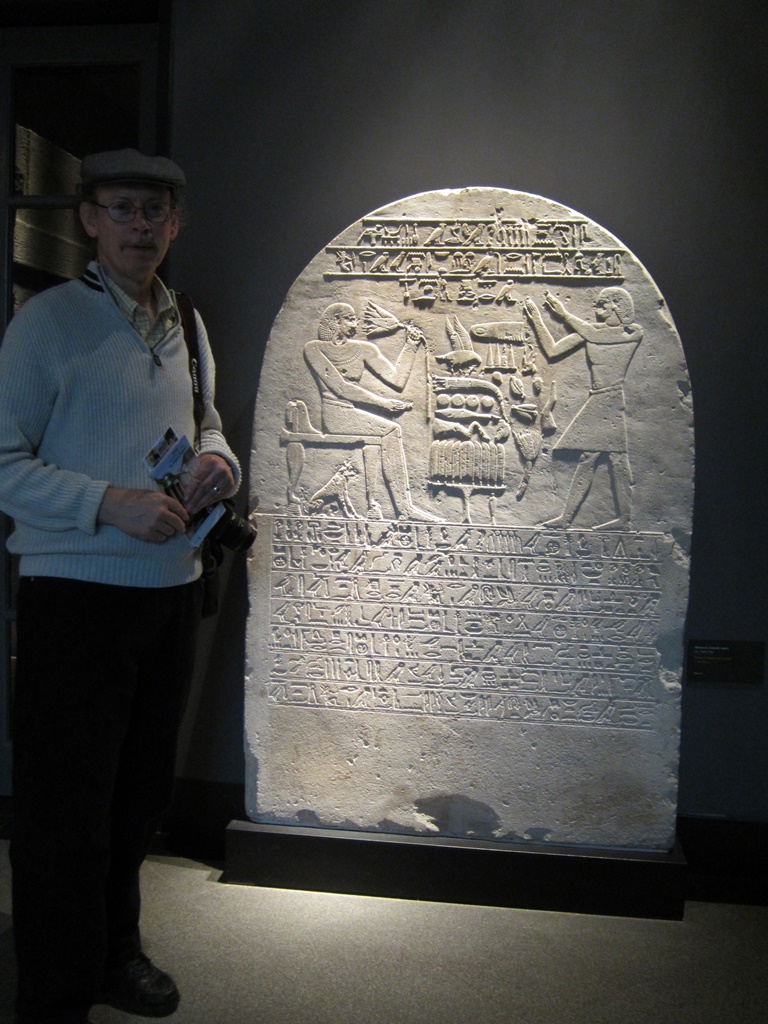
Bob and Stele of General Antef (ca. 2050 B.C.)
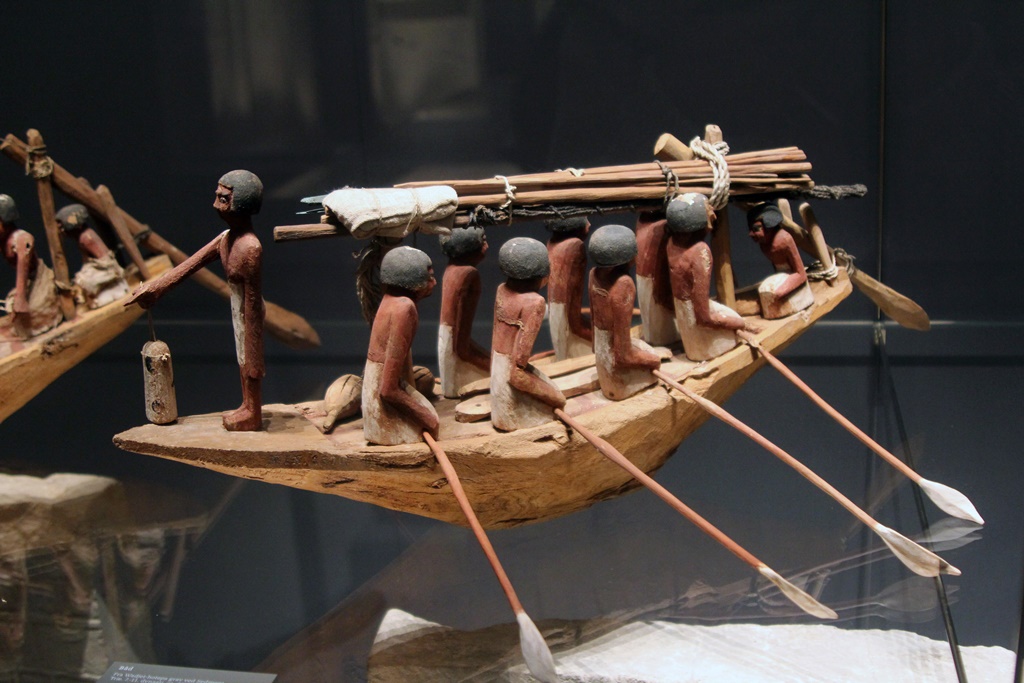
Boat Model with Rowers
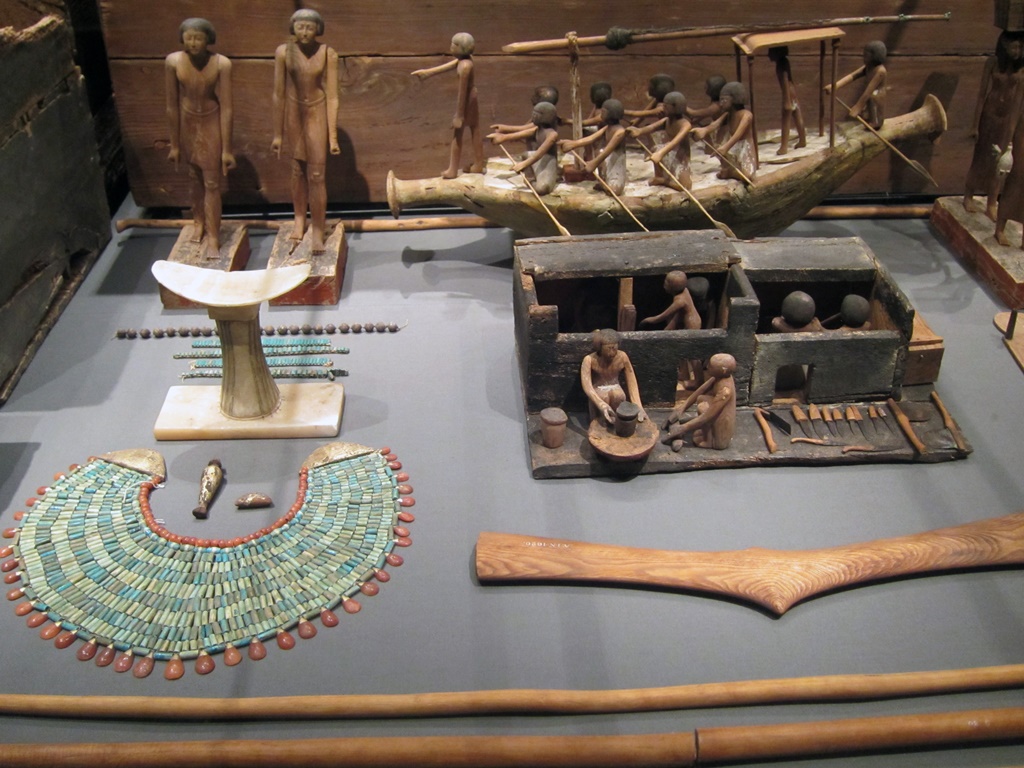
Models and Jewelry
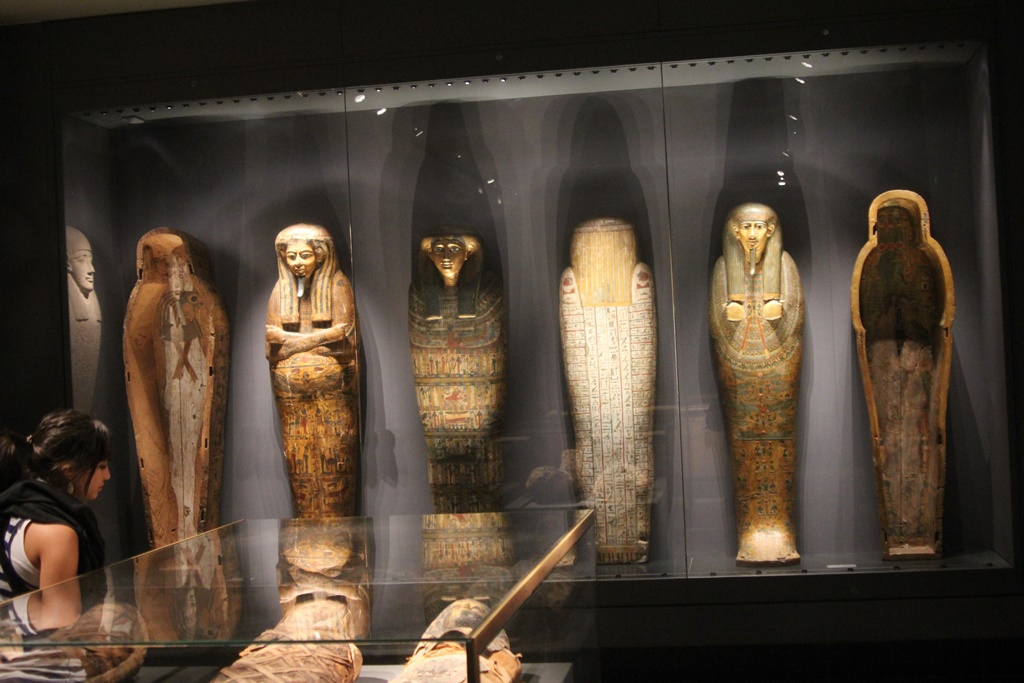
Mummy Cases
Carl also took an interest in collecting paintings. He acquired some paintings from old masters, but most of his
acquisitions were works by French impressionists and post-impressionists.
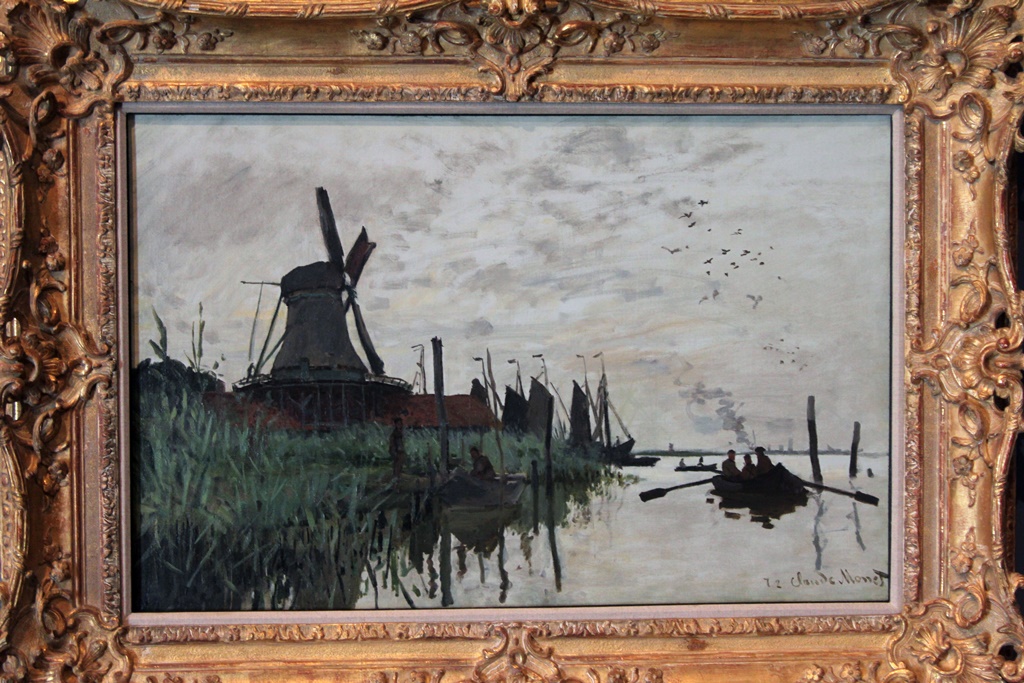
Windmill and Boats near Zaandam, Claude Monet (1871)
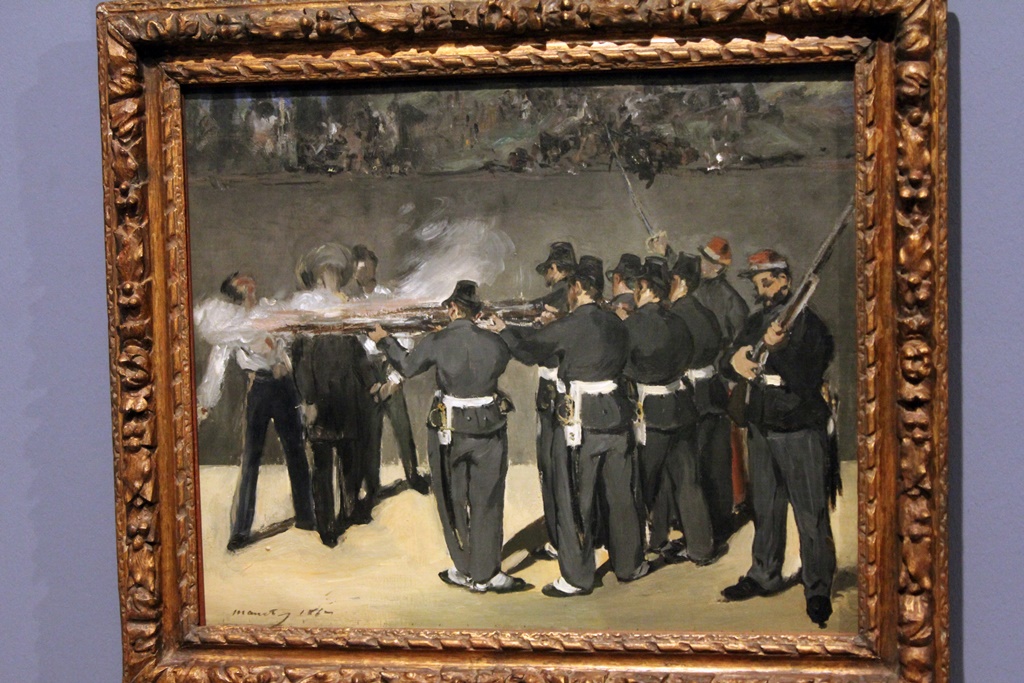
The Execution of Maximilian, Édouard Manet (1867)
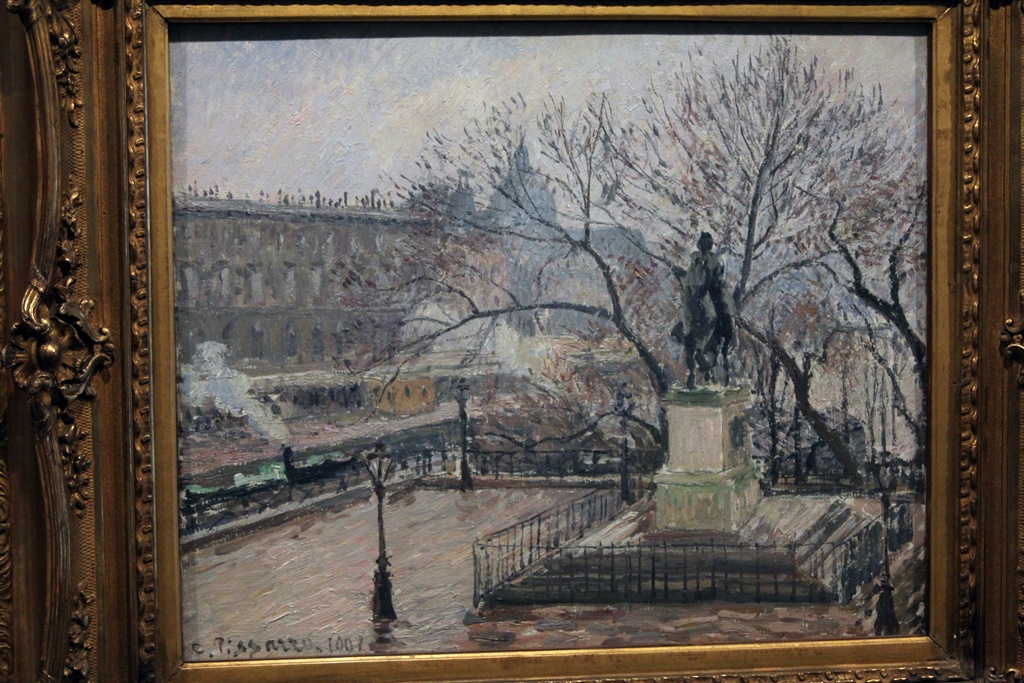
Pont Neuf with Statue of Henri IV, Camille Pissarro (1901)
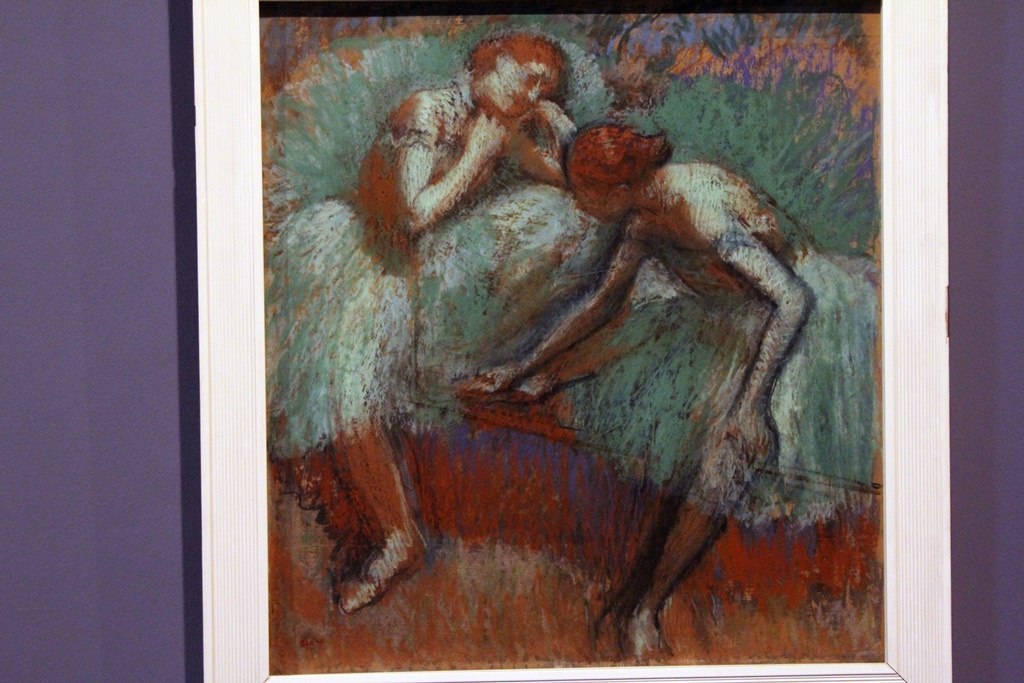
Two Dancers, Edgar Degas (ca. 1898)
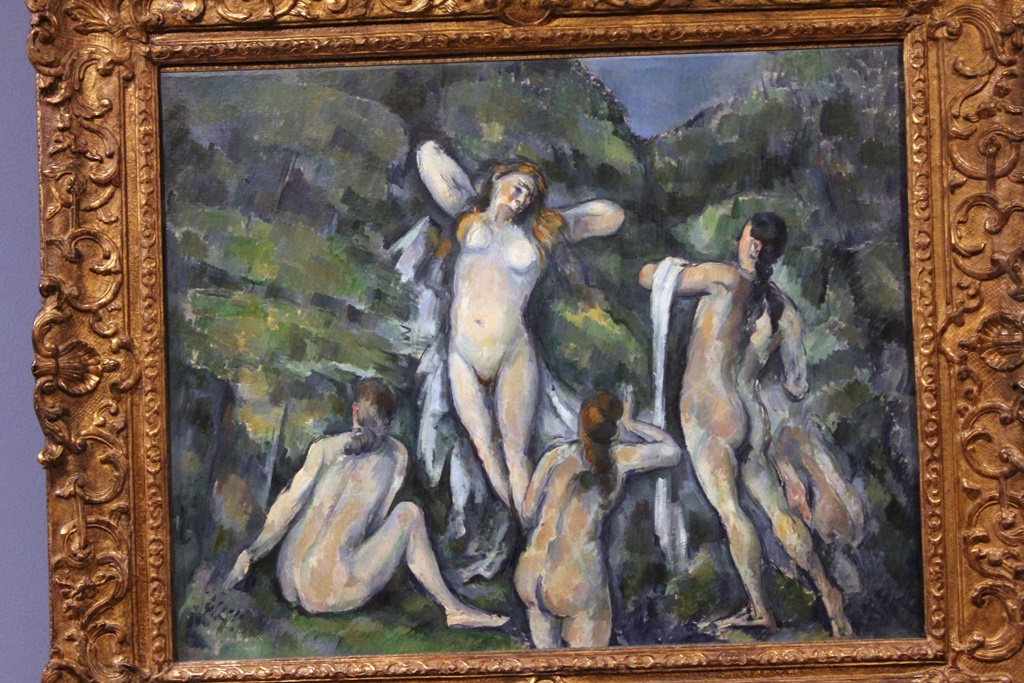
Women Bathing, Paul Cézanne (ca. 1900)
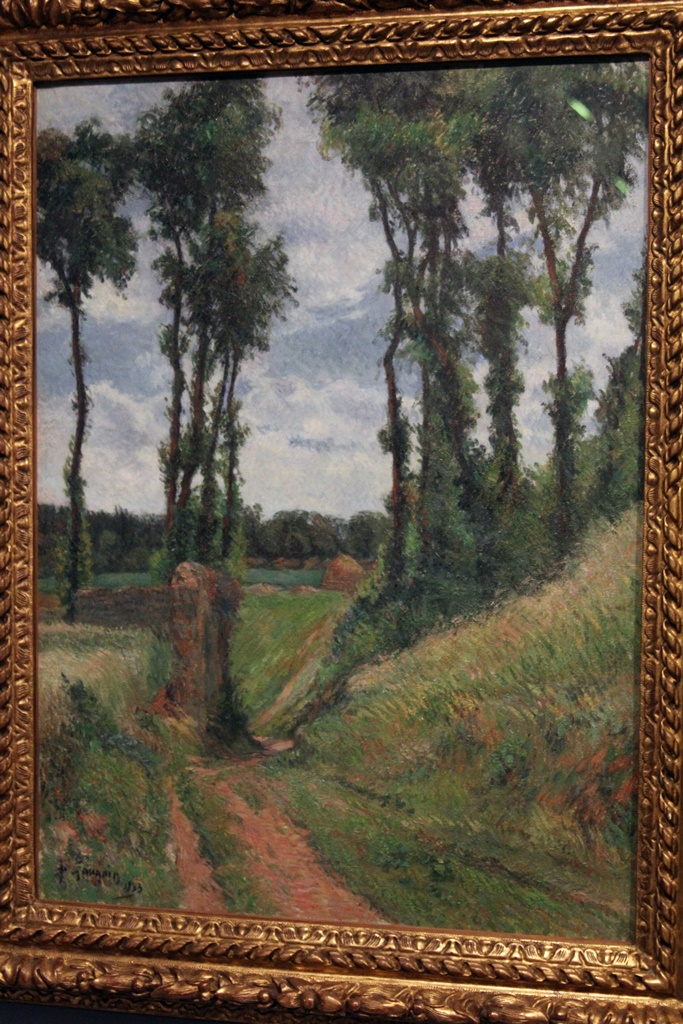
Poplars, Paul Gauguin (1883)
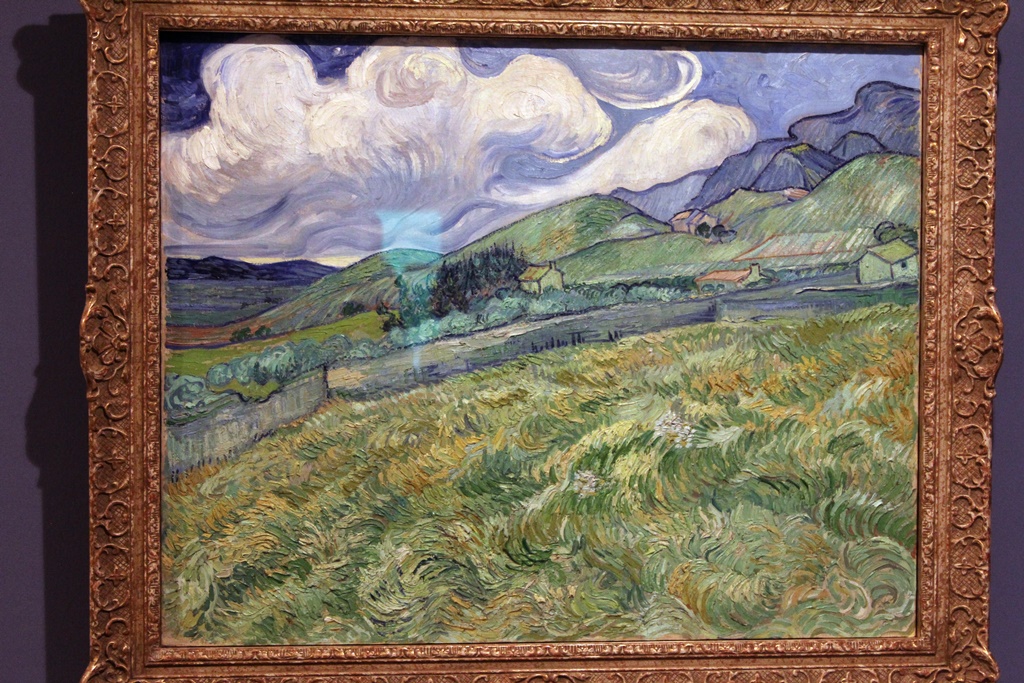
Landscape from Saint-Rémy, Vincent van Gogh (1889)
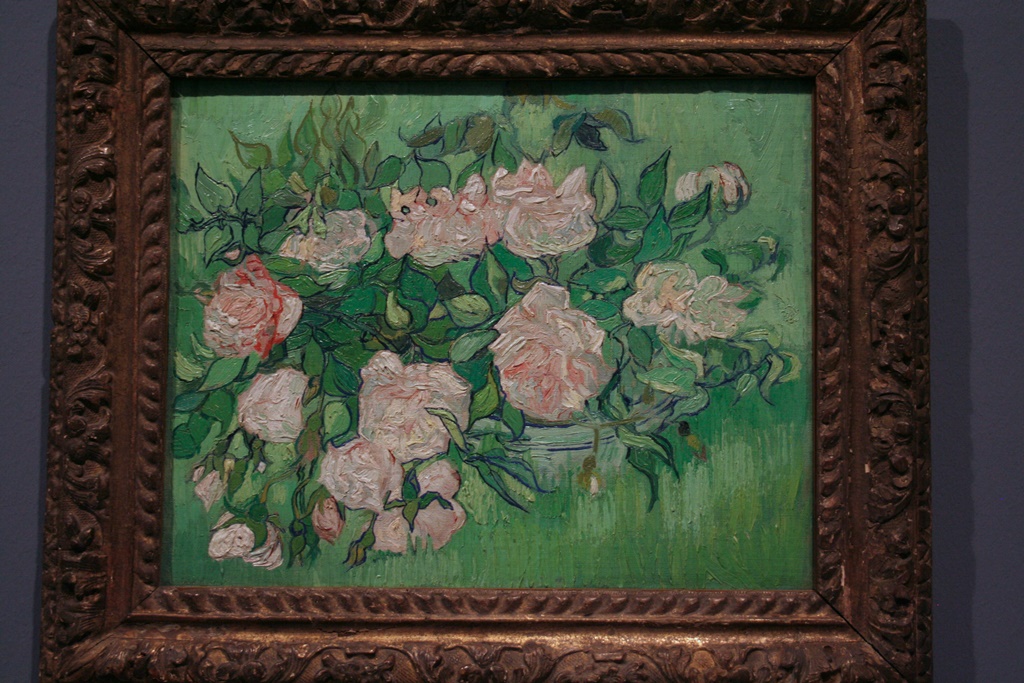
Still Life: Pink Roses, Vincent van Gogh (1890)
Portrait of Monsieur Delaporte, Henri de Toulouse-Lautrec (ca. 1893)
Our exploration of the second building eventually took us to the roof, where there was a nice view of the immediate
vicinity, including the Tivoli Gardens amusement park located
across the street.
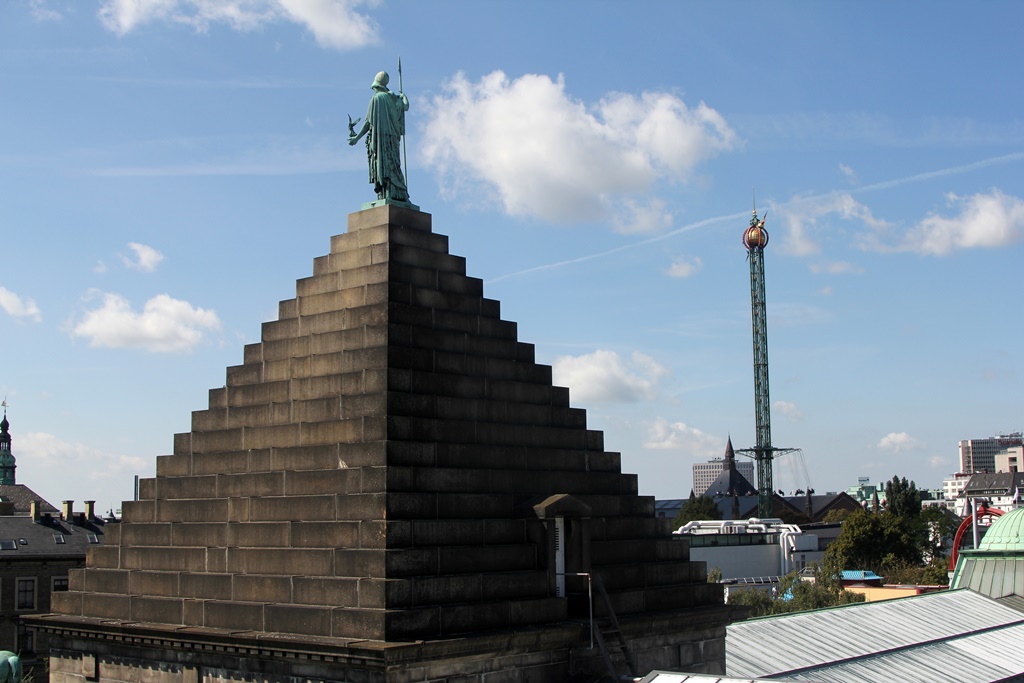
Pyramid on Roof

Pyramid and Tower Ride at Tivoli Gardens
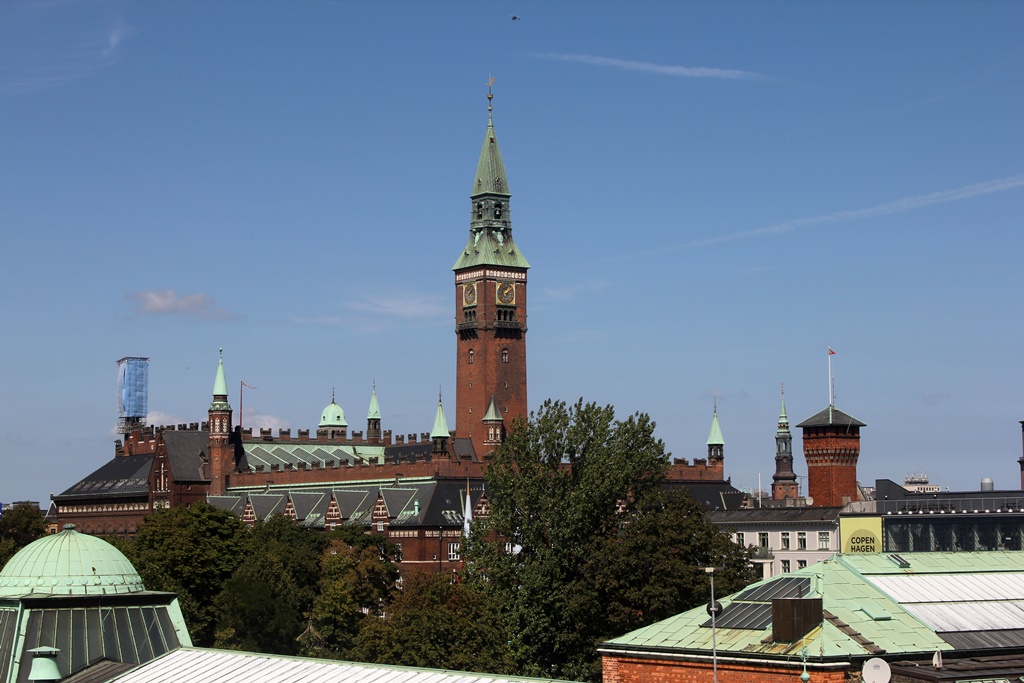
Copenhagen City Hall
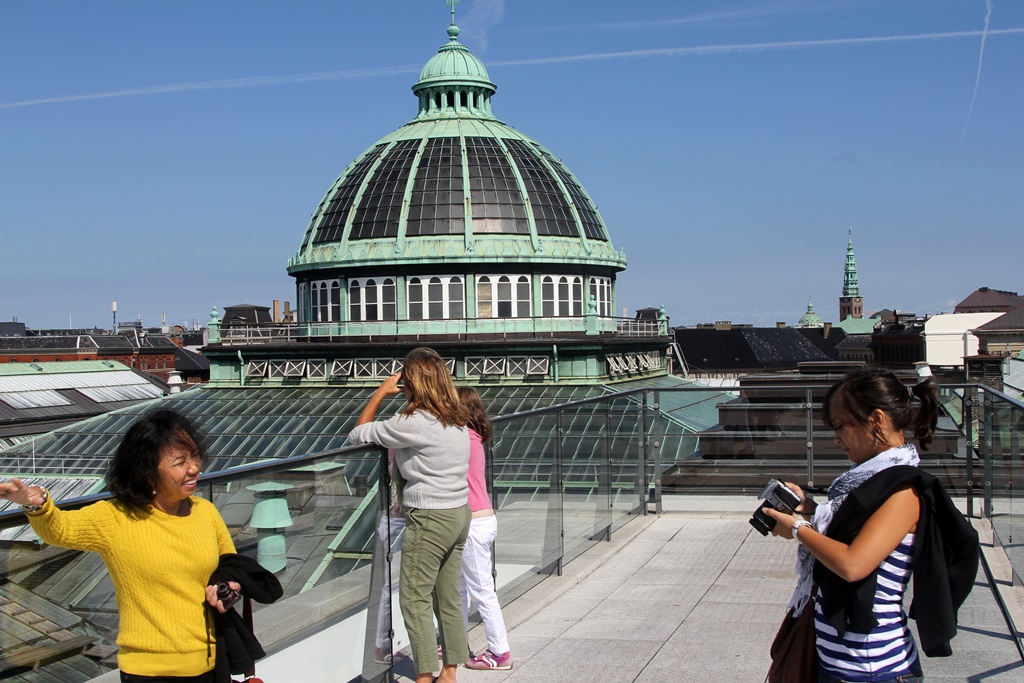
Nella and Connie with Glyptotek Dome
Roof and Dome with Connie and Nella
From the Glyptotek we caught a bus which took us to Amalienborg, a complex of palaces which are still in use.

